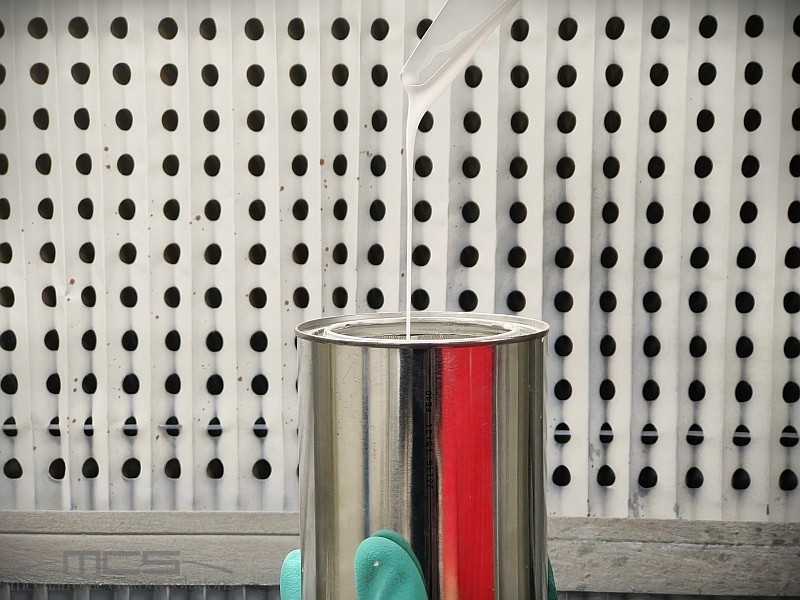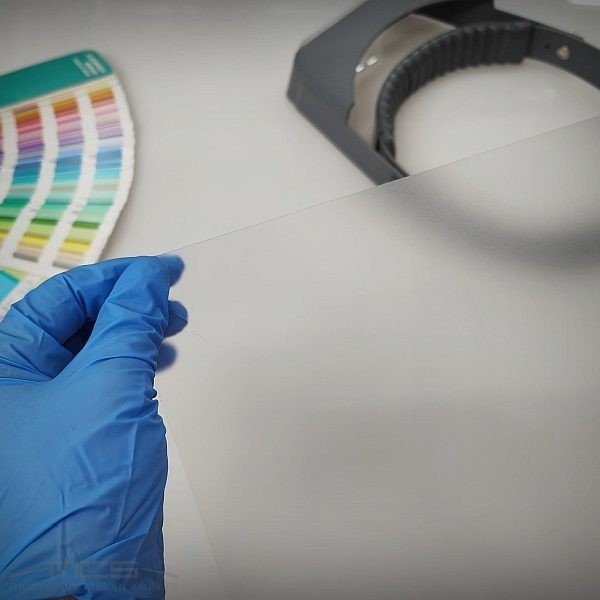In environments like laboratories, medical offices, or hospitals, cleanliness and hygiene are not just requirements but essential pillars that ensure the well-being and safety of peoples.
It is very important to touch a surface and know that, even if invisible to the human eye, there is a protective barrier that separates us from potential bacterial threats.
This safety is what we offer to our customers when we integrate antimicrobial treatments into our membrane switches and the surfaces of our coated products.
Antimicrobial Polyester
The polyester we offer and recommend for membrane switches intended for the medical sector is produced by the manufacturer in class 1000 clean rooms.
On the outer surface of the material, the one in contact with the user, an antimicrobial treatment is applied, integrating an invisible agent evenly distributed across the surface. This agent creates a stable protective barrier, an invisible “shield” that prevents bacterial growth.
The antimicrobial additives used in this process have received approval from international organizations such as the FDA (Food and Drug Administration), EFSA (European Food Safety Authority), and EPA (Environmental Protection Agency). [1] This certification of safety and quality allows us to guarantee our customers a product they can trust.

Antimicrobial Treatments for Coated Surfaces
We also offer advanced solutions for antimicrobial protection on the coated surfaces of our products. We are proud to collaborate with suppliers who recognize our commitment to continuous improvement and our desire to provide real added value to our customers through innovative solutions.
In our coating process, at the customer’s request, we can use solvent-based paints enriched with a special additive: a polymer capable of releasing silver ions. This additive plays a key role in the formation of a surface film with high antibacterial properties.
Silver ions consistently release protection against bacteria, preventing the proliferation of microorganisms, including harmful strains such as E. Coli (Escherichia coli) and MRSA (Methicillin-resistant Staphylococcus aureus).
These antimicrobial coatings provide long-lasting protection, making them particularly suitable for environments where hygiene is of utmost importance.
Advantages of Antimicrobial Treatments: More Safety, More Trust
The use of products with antimicrobial treatments or additives offers numerous benefits:

Inhibition of Bacterial Growth: Antimicrobial treatments inhibit the growth of bacteria, mold, and fungals, creating safer and more hygienic surfaces.
Continuous Protection: Thanks to additives that consistently release active agents like silver ions, we ensure lasting protection against microbial contamination.
Enhanced Hygiene: Our solutions are ideal for environments where hygiene is a priority (medical, food, and certain industrial sectors), reducing the risk of bacterial contamination.
Safety and Regulatory Compliance: We use treatments that comply with international health regulations, providing an extra level of safety for products intended for human contact.
Protection Against Resistant Bacteria: We offer protection against antibiotic-resistant bacterial strains, such as MRSA (methicillin-resistant Staphylococcus aureus), helping to reduce infection risks.
Improved Perceived Safety: Using products with antimicrobial treatment provides customers with greater peace of mind, especially in sensitive environments like hospitals, nursing homes, kitchens, etc.
Safety at the Service of Our Customers
In our articles, we have often emphasized our belief that innovation is not just a word but a daily commitment to developing solutions that meet our customers’ real needs.
The antimicrobial treatments on our membrane switches and coated surfaces are not just products, but also our contribution to creating safer and cleaner environments.
If you are looking for a customized solution that offers advanced antimicrobial protection and would like to discuss your specific needs, we are here to support you.
Contact us today to discover how we can help you bring your project to life with the highest levels of safety and quality.
[1] In summary, the FDA, EFSA, and EPA play complementary roles in regulating antimicrobial additives. While the FDA focuses on food safety in the United States, EFSA operates at the European level to ensure similar standards, and the EPA addresses the environmental impact of chemicals used across various industries.

